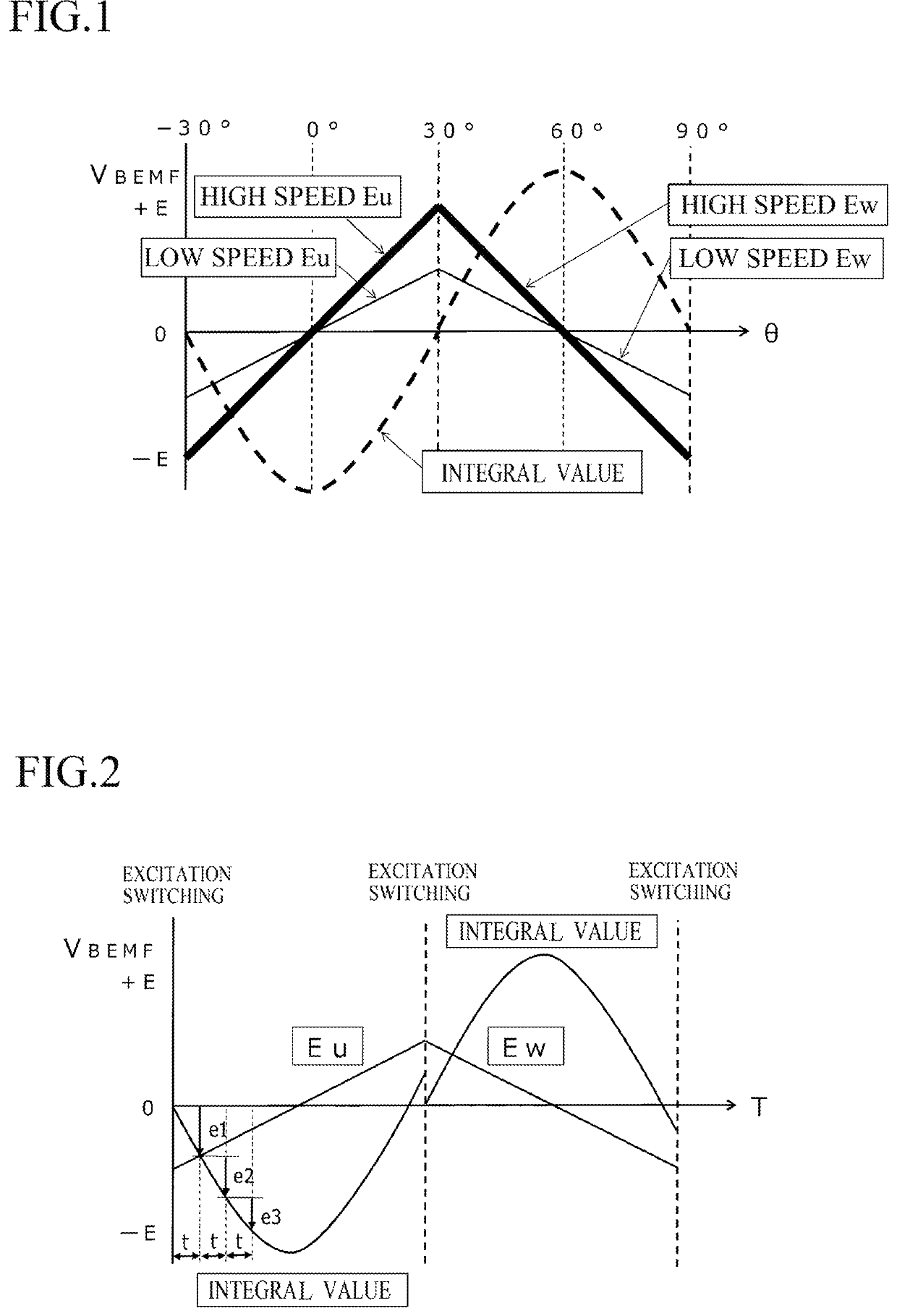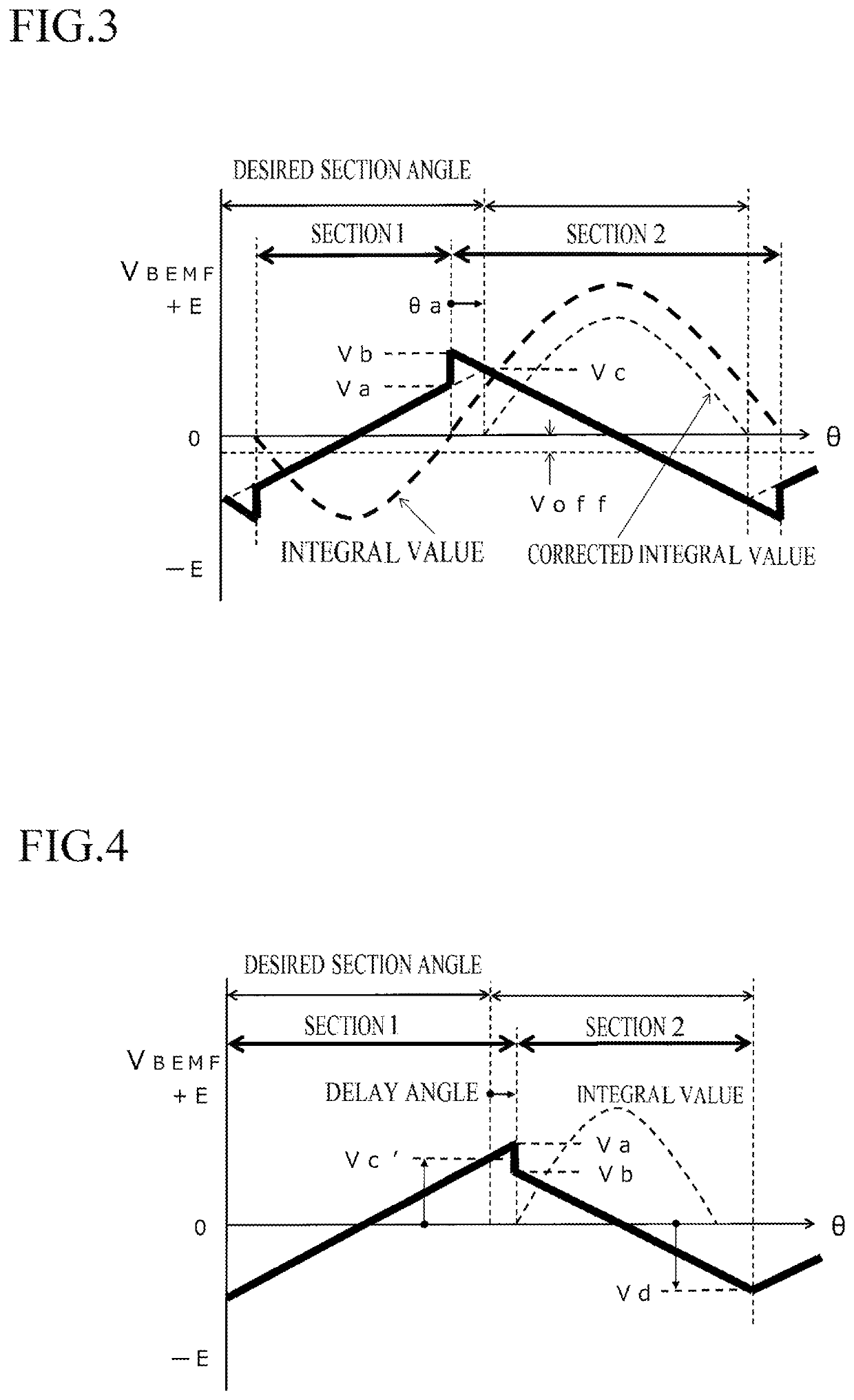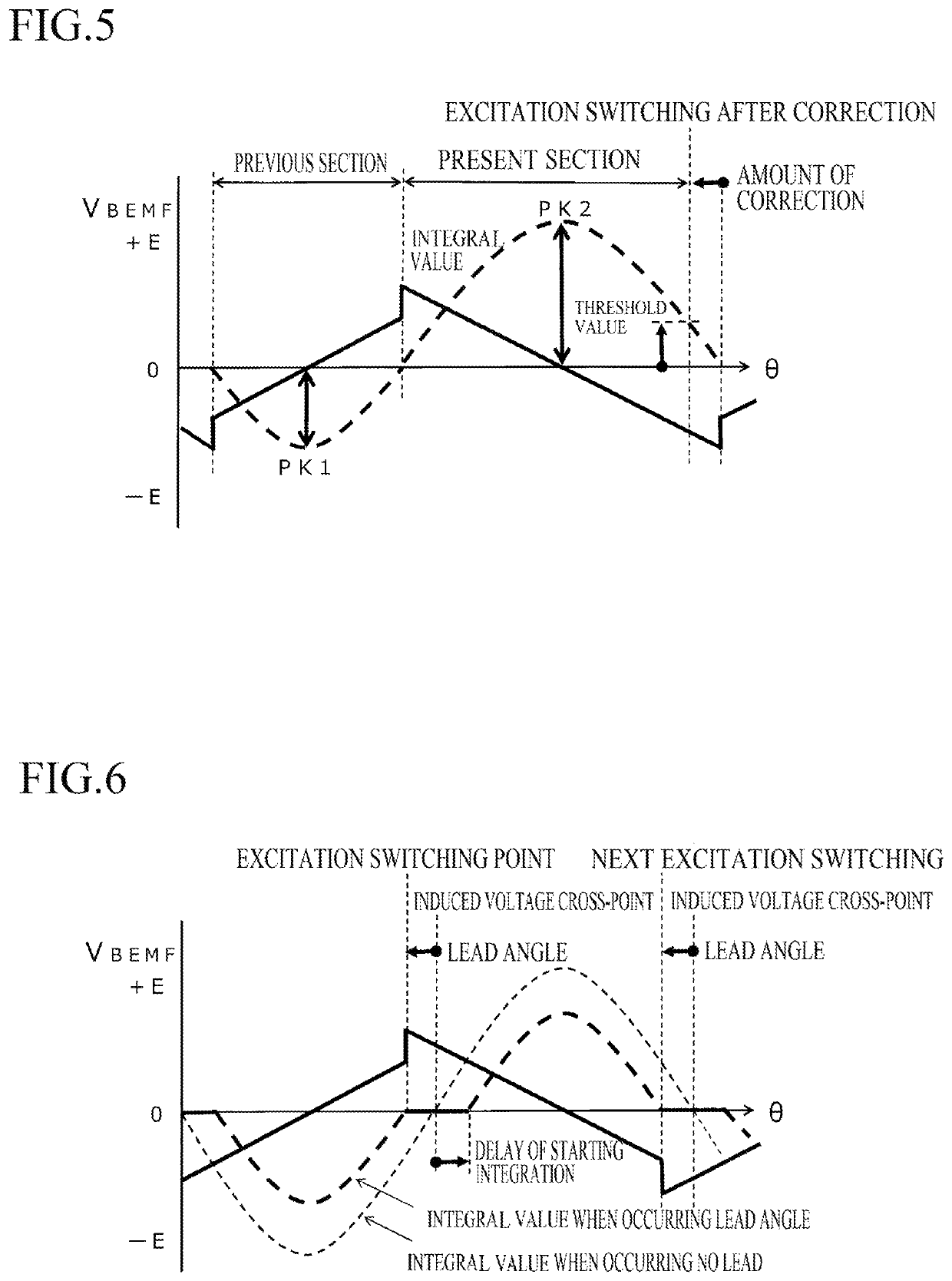Method for driving sensorless motor
a sensorless, motor technology, applied in the direction of electrical equipment, electrical commutation motor control, control systems, etc., can solve the problems of large angle estimation errors, torque reduction, step-out, etc., to reduce torque ripples, reduce torque ripples, and improve motor efficiency.
- Summary
- Abstract
- Description
- Claims
- Application Information
AI Technical Summary
Benefits of technology
Problems solved by technology
Method used
Image
Examples
Embodiment Construction
lass="d_n">[0064]Embodiments of the method of the present invention for detecting a rotor position of a sensorless motor will now be described with reference to the attached drawings. The present invention can be widely applied to a sensorless driving method for sensorless-driving a sensorless motor comprising: a rotor 2 having a permanent magnetic field 3; and a stator 4 having star-connected coils, which are arranged with a phase difference of 120° and in which phase ends are connected to a motor driving circuit (see FIG. 12).
[0065]A method for sensorless-driving a three-phase DC brushless motor will be explained, as an example, with reference to the structure thereof.
[0066]An example of the three-phase DC brushless motor relating to the present invention is shown in FIG. 12. The three-phase brushless DC motor has a two-pole permanent magnet rotor and a stator 4 having three slots. The motor may be an inner rotor type or an outer rotor type.
[0067]In FIG. 12, the rotor 2 is integra...
PUM
 Login to View More
Login to View More Abstract
Description
Claims
Application Information
 Login to View More
Login to View More - R&D
- Intellectual Property
- Life Sciences
- Materials
- Tech Scout
- Unparalleled Data Quality
- Higher Quality Content
- 60% Fewer Hallucinations
Browse by: Latest US Patents, China's latest patents, Technical Efficacy Thesaurus, Application Domain, Technology Topic, Popular Technical Reports.
© 2025 PatSnap. All rights reserved.Legal|Privacy policy|Modern Slavery Act Transparency Statement|Sitemap|About US| Contact US: help@patsnap.com



